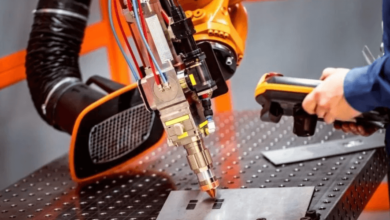The Key to Better 5G Experience Everywhere

The promise of 5G is clear: faster downloads, ultra-low latency, and seamless connectivity. But delivering this everywhere—from busy cities to quiet suburbs and indoor spaces—needs more than upgraded cell towers. It requires a shift in network design. That’s where small cell networks come in, providing the foundation for a reliable and expansive 5G experience.
What Are Small Cell Networks?
Small cell networks are compact, low-powered nodes that boost coverage and capacity. Unlike traditional macro towers, which serve large areas, small cells target smaller zones, from city blocks to building interiors. Discreetly installed on lamp posts, rooftops, or walls, they deliver strong, reliable signals in high-demand or hard-to-reach areas, bringing 5G closer to users and improving performance.
Why 5G Needs Small Cells
5G technology uses various frequency bands, including high-band millimeter waves for ultra-fast speeds. However, these higher frequencies have limits—they don’t travel far or penetrate buildings well. Traditional towers can’t provide consistent coverage in areas with dense populations or tall structures. Small cell networks act as localized boosters, filling coverage gaps and ensuring users experience the full potential of 5G. Without this infrastructure, 5G connectivity would be inconsistent and limited.
Enhancing Capacity in Congested Areas
One of the key advantages of small cells is their ability to dramatically boost network capacity. In high-traffic areas like stadiums, shopping malls, business districts, and transportation hubs, traditional cell towers often struggle to handle the demand. Small cells alleviate this pressure by offloading traffic from overburdened macro towers, redistributing it more effectively across a dense network of access points. The result? Clearer calls, faster data speeds, and fewer dropped connections—even in the busiest, most crowded environments.
Supporting Smart Cities and IoT
As cities adopt smart infrastructure and more devices connect online, the need for seamless data flow is growing fast. Technologies like smart sensors, autonomous vehicles, and remote services depend on real-time data exchange. Small cell networks are key to this digital shift. With dense deployment and low-latency, they power smart traffic systems, public safety networks, and IoT ecosystems. These networks ensure reliable, responsive communication, forming the backbone of our connected world.
See also: Benefits of Using Laser Technology in Custom Design
Expanding Indoor Coverage
Indoor connectivity is a major challenge in wireless communication. Thick walls, large buildings, and underground spaces often disrupt signals, causing slow speeds or dead zones. Small cells offer a practical solution. By installing small cell units in offices, hospitals, or malls, coverage improves significantly. These units provide reliable, high-speed 5G service, ensuring seamless connectivity as users move indoors. The result? Better productivity and a smoother user experience.
Scalability and Future-Proofing
The modular design of small cell networks makes them highly scalable. New nodes can be seamlessly added as demand increases, while software-defined management enables real-time adjustments without the need for extensive overhauls. This flexibility positions small cell infrastructure as a future-ready investment. As 5G applications like augmented reality, telemedicine, and industrial automation continue to expand, a responsive and adaptable network will be critical to staying ahead of technological advancements.
Faster Deployments with Local Integration
Installing new macro towers takes time, requiring planning, zoning approvals, and community negotiations. In contrast, small cells are faster and easier to deploy. Their compact design blends into existing infrastructure, making them less intrusive and more accepted in urban and suburban areas. This quicker deployment improves connectivity without the delays of large-scale construction, offering an efficient way to close the digital divide.
Conclusion
5G is transforming how we live, work, and engage with the digital world—but it needs the right infrastructure to reach its full potential. Small cell networks play a key role in making 5G a reality, extending its reach beyond traditional towers. By improving indoor coverage, reducing network congestion, and enabling innovations like smart cities, small cells are the backbone of a faster, more connected world. As demand for seamless connectivity grows, adopting small cell solutions will be key to delivering reliable, high-quality service everywhere.





